Lyft’s earnings announcement Tuesday night was one for the ages. Their quarterly earnings statement reported that its margins rose by 5% or 500 basis points. In other words, for each dollar Lyft receives from its clients, they will earn an additional five cents. That may not seem like a lot, but it is. However, there was a problem with the sharp jump in its margins. The decimal was misplaced. Shortly after the earnings release, Lyft corrected itself, saying the margin only rose by .50% or 50 basis points. Lyft shares went on a rollercoaster ride. The stock initially surged 100%, but as shown below, it quickly gave up a large chunk of the gains. The stock is still poised to have a substantial increase.
Since bottoming in November, Lyft’s stock has nearly doubled. While recent performance may be encouraging, it is still down over 75% since trading at 68 in 2021. Conversely, Uber, its chief competitor, has also surged since November. But, its stock is trading at record highs, about 15% above the 2021 peak. Why? For starters, Uber operates internationally, while Lyft is solely domestic. Furthermore, Uber also offers food delivery and a freight division. Uber had $37 billion in sales for the last year, up 3x since 2018. Lyft, on the other hand, is losing ground. Its revenues of $4.4 billion are a fraction of Uber’s, and its 5-year growth of 80% is well below Uber’s pace.

What To Watch Today
Earnings
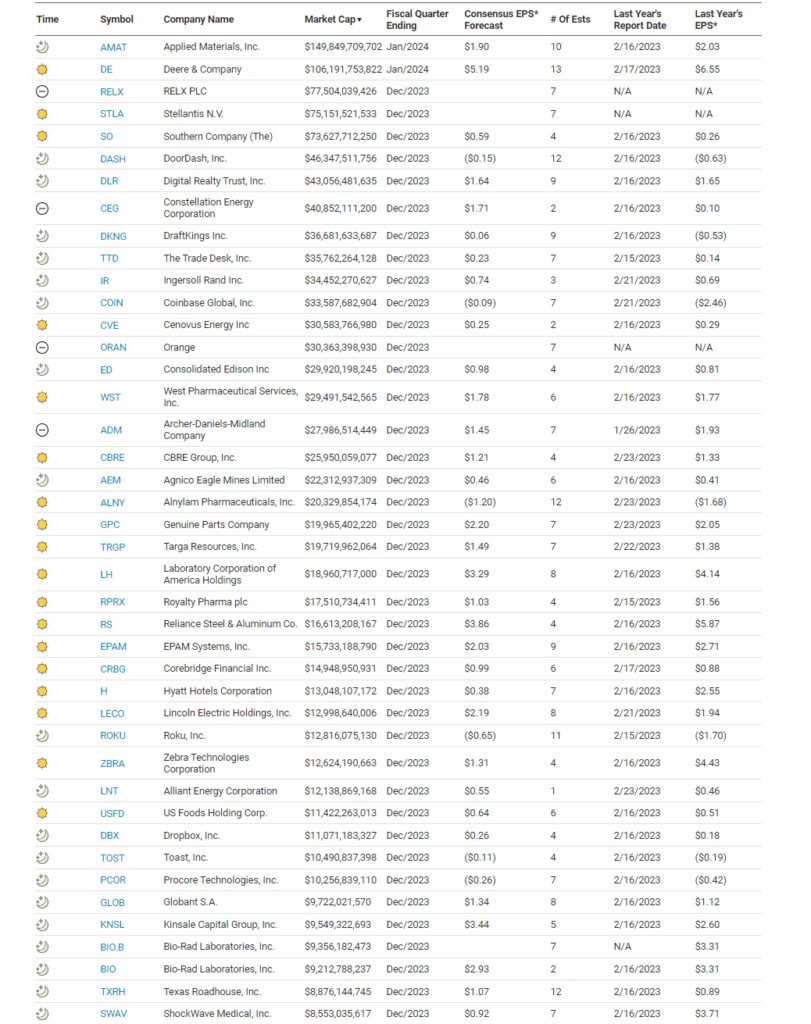
Economy
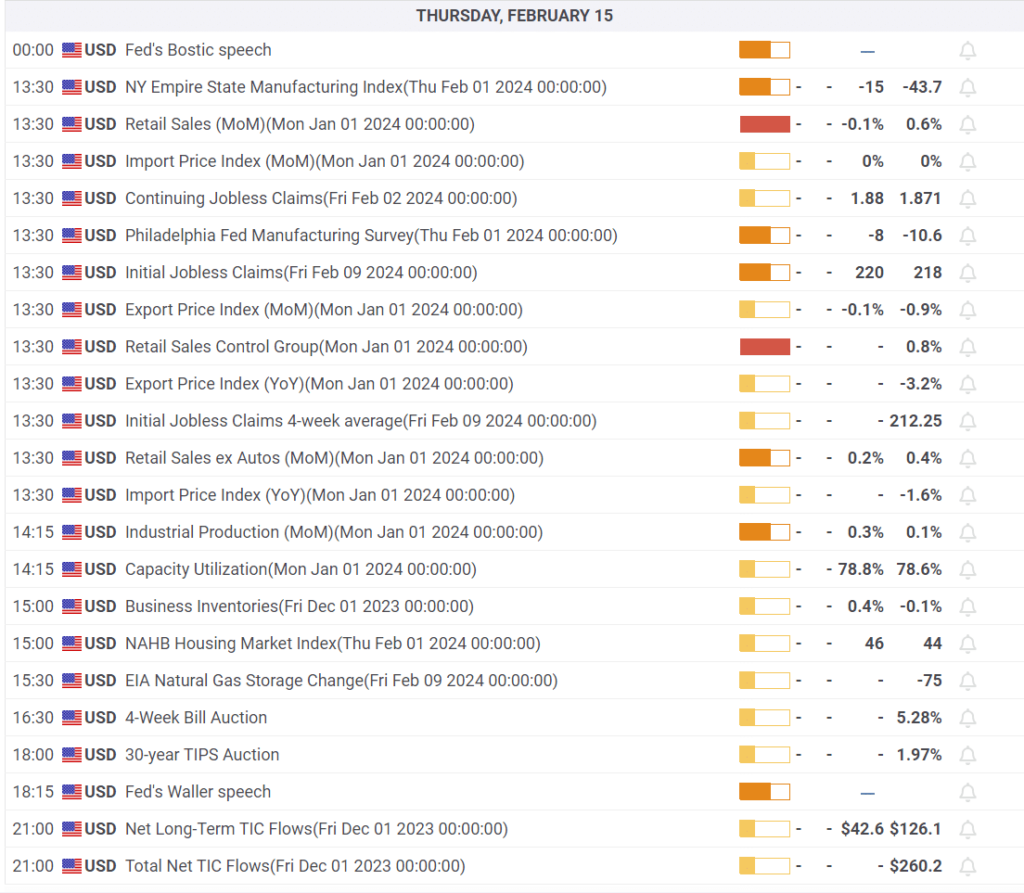
Market Trading Update
The market rebounded off the 20-DMA average yesterday, keeping the bull trend intact for now. The market bounced off the 20-DMA and slightly reduced the overbought condition. Such keeps the current trend positive, keeping equity allocations near full weight. However, the internals continue to weaken, and the market is close to registering a sell signal from an elevated level. Furthermore, the deviation from the 200-DMA remains quite large, likely limiting further upside until a more significant correction occurs to reduce the extension.
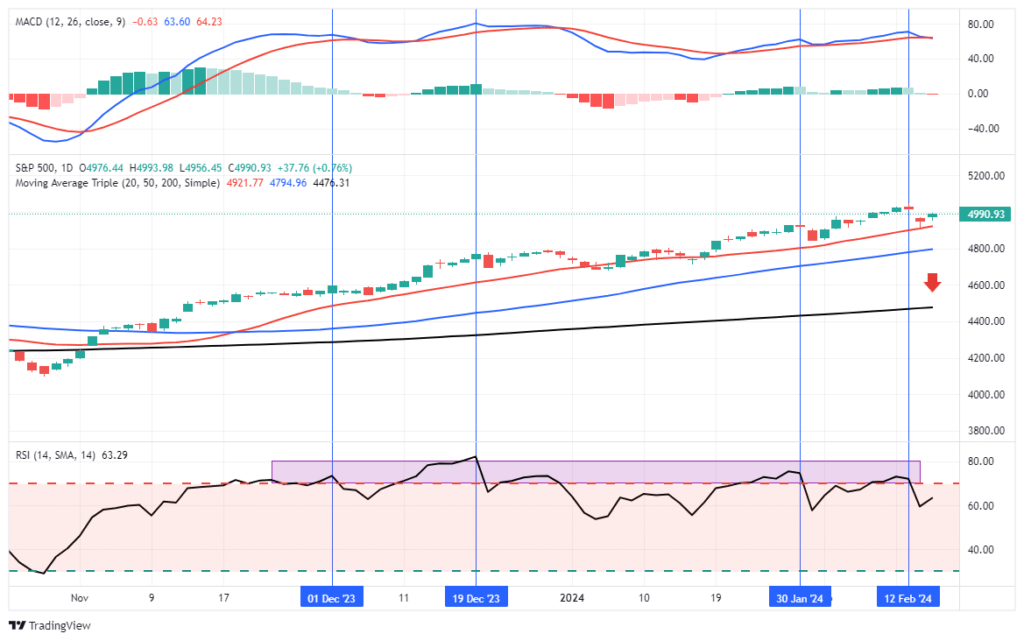
Furthermore, as noted by Sentiment Trader yesterday, numerous “risk off” warnings continue to occur in the market.
“Subtle clues regarding the internal strength of the stock market advance continue to emerge, suggesting a backdrop with fewer and fewer stocks participating in the uptrend. The latest indicator to trigger a warning measures participation based on relative performance versus the S&P 500. This system, a member of the Risk-Off Composite Model, registered an alert on Tuesday, indicating the world’s most benchmarked index could struggle over a medium-term horizon. While a concern, the weight of the evidence has not overwhelmingly swung to the bearish side of the ledger. For now, we should remain vigilant regarding additional risks.”
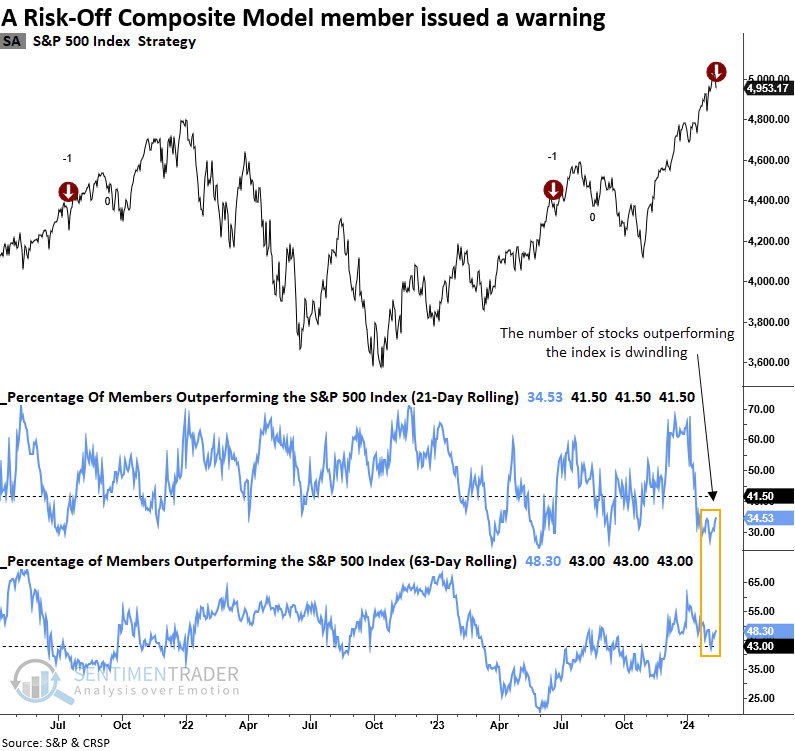
Historically, the last half of February and March tend to be weaker periods in the seasonally strong stretch. Continue taking profits and rebalancing risks as needed.

The Lone Dove At The Fed
While other Fed members appear to support Powell and his conservatism toward rate cuts, Chicago Fed President Austan Gollsbee is not on board. In prepared remarks Wednesday morning, he said he “doesn’t support waiting until inflation is at 2% for a rate cut.” Further, he reminded the audience that the Fed’s inflation goal is based on PCE, not CPI. PCE is currently running half a percent below CPI at 2.6% annually. More importantly, it has only risen by 0.87% over the last six months.
One reason for the discrepancy is the CPI assigns a 33% weight to shelter prices, while PCE is 15%. Given that shelter prices used by the indexes are well above real-time prices, the weighting difference skews CPI higher than PCE. Essentially, Goolsbee is telling us to ignore the faulty shelter prices. As we noted yesterday, CPI, less shelter prices, is running at 1.40%.
Goolsbee states he “doesn’t believe the last mile of the inflation fight is the hardest.” Many other Fed members still believe they must keep policy restrictive as further declines in inflation will be increasingly difficult. Goolsbee is but one voter and unlikely to heavily influence Powell, but his comments may sway other members.
Sentimentrader Sends A Warning
The following analysis from Sentimentrader adds more data to their growing pile of research, warning that investors should be cautious of a potential decline. Their latest, shown below, highlights that over the last 20 trading days, the S&P 500 has closed at a yearly high on over half of those days. Yet, the VIX volatility index has failed to reach a 63-day low. Typically, the VIX and the S&P 500 have an inverse relationship. However, at times, usually when the market is overbought, the VIX will rise alongside the market. Such is the case today, which triggered a warning from Sentimentrader.
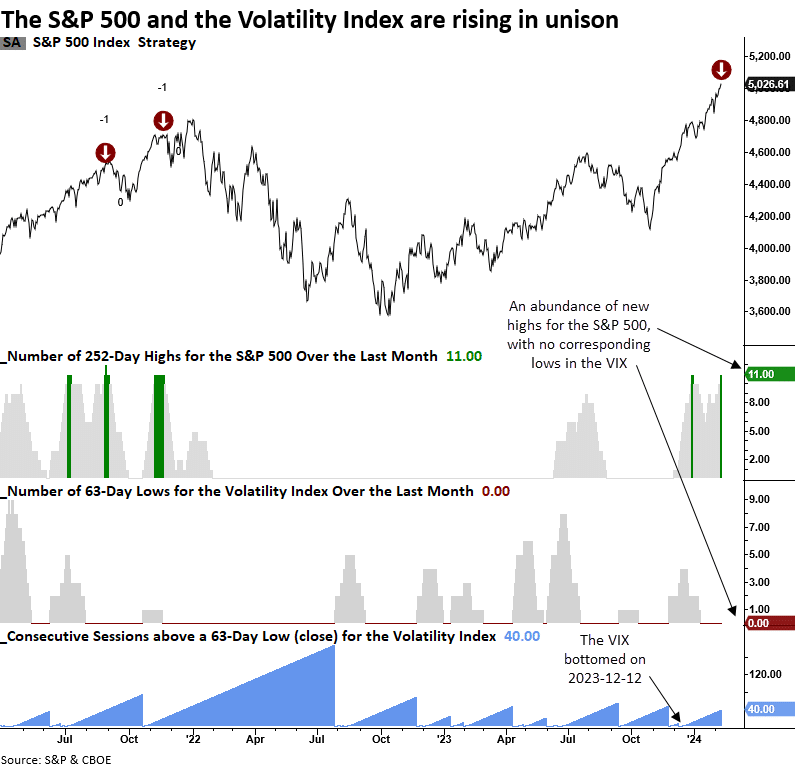
Sentimentrader Sends A Warning For Small-Caps
The following commentary and graph are courtesy of Sentimentrader:
The S&P 500 has been hitting record highs as internal small cap momentum deteriorates. The McClellan Summation Index for the Russell 2000 is well below zero even as the S&P 500 has driven to record highs. This is unusual – usually, small cap momentum ebbs and flows along with swings in the S&P as investors are in gear. The last time they were out of gear like this was in 2021. Historically, this has been a worse sign for small caps than the broader market.
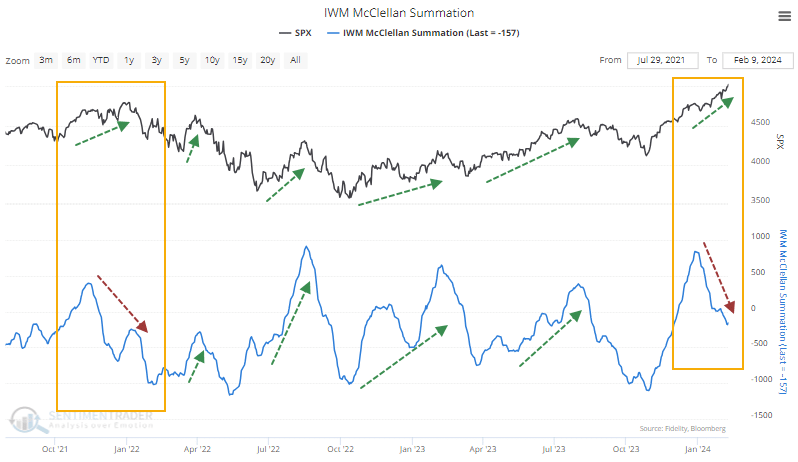
Tweet of the Day

“Want to have better long-term success in managing your portfolio? Here are our 15-trading rules for managing market risks.”
Please subscribe to the daily commentary to receive these updates every morning before the opening bell.
If you found this blog useful, please send it to someone else, share it on social media, or contact us to set up a meeting.


